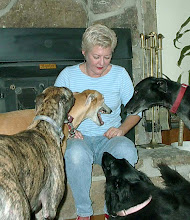There are a host of mechanisms in place for building and strengthening communities and I'll talk about those shortly. But first, a few more words on identifying the common interest necessary to build a community. While we talk about the common interest, keep in mind two underlying principles that can potentiate any common interest: time and place.
Geography- It's hardwired -- or at least firmware wired.
- And it's a freebie, since it solves a lot of communication problems as well.
Always look at your group first to see if it can be characterized as a common geographic one. For instance, the spay/neuter issue might be reworked as part of a larger program of livability issues for a particular community. Martial arts folks already have this on their minds, since student recruitment tends to be driven by geography, at least initially, more than style or reputation.
Downside: by its very nature, limited. But that can be ameliorated in part by exploiting time and adding in additional strands as focal points.
TimeWe've all got a past and a future and that's true of geographically-based groups as well. For instance, most martial arts, for instance (mistakenly or not), maintain some semblance of a link with their origins. All style of karate, for instance, originated in Okinawa. By definition. The word has lost that connotation in the broader community, but that's actually what karate means. That focus, of geography of origin, can serve as a focal point.
Alumni organizations would be another example of a geographic community extended by a time strand.
Similarly, FUTURE geography can also serve as a focal point. Reaching out to future residents -- or representatives of future residents, e.g. the idea of preserving the area for your grandchildren -- is also a way to expand the common interest.
Finally, find ways to interest people outside of your geographic community in the existence or issues of your community. This is not the same as expanding your geographic community. It is more along the lines of serving as a model for others -- or a bad example. "This is how we did it," versus, "This could happen to you."
Next: Causes



